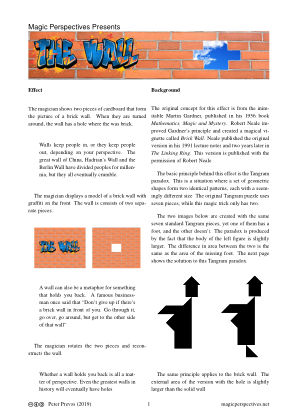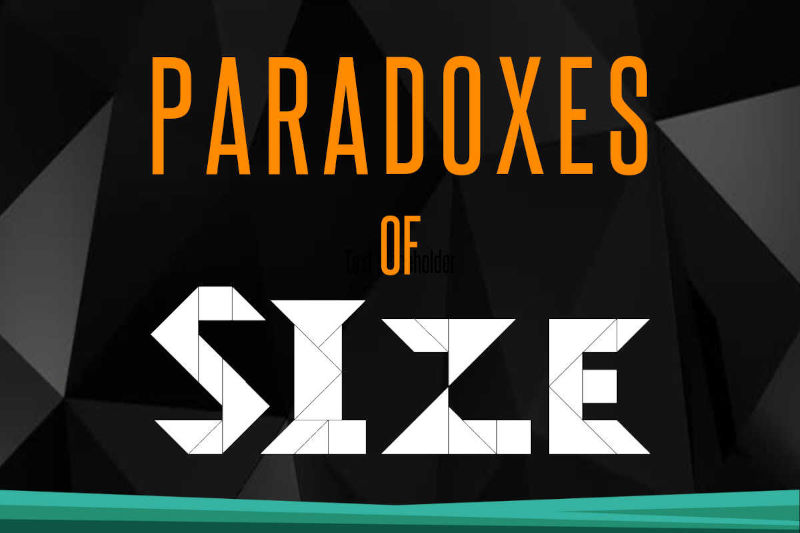
The Greatest Wall: Magic with the Tangram Paradox

Peter Prevos |
213 words | One minute
Share this content
People love to build walls. Walls keep people in, or walls keep people out, depending on your perspective. The great wall of China, Hadrian's Wall and the Berlin Wall were once impenetrable, but they all eventually crumbled. No matter how high the wall, people will always find a hole to get through it.
The magician shows two pieces of cardboard that form a brick wall. When she turns the pieces to show the other side, the wall now has a hole.
This trick uses geometry to create the illusion that a hole has appeared in the wall. This method is the same geometric principle that is behind the Tangram Paradox. Robert Neale developed this trick, based on earlier work by Martin Gardner.
The ebook Paradoxes of Size discusses the mathematical intricacies of the Tangram Paradox in detail. If you like to know how this principle developed over the past five hundred years, then you should read this book as a perfect companion to the trick.
The pdf download for his trick contains the explanations plus a high-resolution template to create the props.
Share this content



